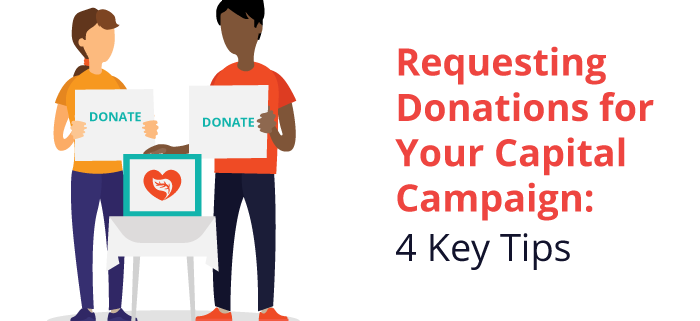Requesting Donations for Your Capital Campaign: 4 Key Tips
If your organization is looking to build its assets and facilitate growth, you might want to start planning a capital campaign. Money raised through a capital campaign can fund the development of projects like new buildings, renovations, and equipment, or provide start-up funds for new programs and increase endowment.
Sounds exciting, but not so fast. Extensive planning is critical to maximize the success of your campaign. This guide will share some expertise regarding capital campaigns in order to bolster your future fundraising efforts.
We’ll go over a comprehensive, step-by-step process to request donations for your capital campaign. Read on to hear some of our years of insight regarding this process as it is split up into the following steps:
- Create a fundraising plan
- Request donations online
- Send direct mail appeals
- Thank donors for their support
We’re bringing you our best practices to help your organization improve and thrive. Dive into our guide, and prepare to learn some game-changing capital campaign fundraising tips.
1. Create a fundraising plan
Your best foot forward with your capital campaign starts with your team, and fundraising plans are key to benefiting your team and organizing your campaign. With a well-written plan, your entire team will have a document to reference for all of the decisions you make as you move forward with your fundraising efforts.
Fundraising plans organize vital information about your campaign in one place, allowing you and your team to set goals with confidence. The content of your campaign plan will surely vary depending on the needs of your organization and your capital campaign itself. Some elements you may want to consider include:
- Objectives
- Goals
- How to recognize donors
- Leadership structure
- Campaign communications
- Budget
- Timeline
Each of these elements plays a vital role in the creation of a successful capital campaign plan. And luckily for you, a successful capital campaign plan often leads to a successful capital campaign. The plan’s format can vary depending on what works best for you, but every fundraising plan helps achieve the same goal: putting all individuals working on the campaign on the same page.
2. Request donations online
At a time when so much of our lives has shifted online as a result of the COVID-19 pandemic, online fundraising is more beneficial than ever. In fundraising, we need to quickly adapt our work to the changing societal atmosphere—and a pandemic isn’t exempt from that idea.
Requesting donations online is key during a time of social distancing and stay-at-home orders. This shift shouldn’t be too difficult, though. Statistics even show that 54% of donors prefer to give online. Not only will requesting donations online accommodate the remote format of our everyday interactions, it will also appeal to the evidently expressed preferences of donors.
Whenever you’re soliciting online donations for your capital campaign, keep it simple. Consider ditching a brochure—Zoom meetings don’t bode too well with large blocks of text for your donors to read. Instead, work on strengthening information more structured like an outline, such as a donor discussion guide.
3. Send direct mail appeals
For years, direct mail fundraising has supported much of nonprofit fundraising and communication efforts. With direct mail appeals, it’s important to consider how you come across to your audience—the donor. Make sure to tell an engaging story, using visuals and personalization to connect with the reader.
Direct mail appeals can even connect with your online donation solicitations. For example, you can include information in your appeal on how individuals may donate online. Include a URL or QR code, for instance, to your online donation site. Giving your donors many ways to give will increase the likelihood of their donating.
4. Thank donors for their support
Thanking donors is so important. It builds good donor stewardship, which can make the difference between successful and poor fundraising. Your authentic gratitude will lead to happier donors, more positive feelings about your organization, and increased future giving.
You can pursue creative ways to thank your donors, such as video thank-you’s, small gifts related to your mission, or handwritten notes using memorable language. No matter the format, the most important aspect of your “thank you” is that it is genuine and heartfelt.
Stewardship isn’t just about simply thanking your donors. Make sure they feel appreciated and valued—that’s what makes your gratitude memorable. With time and effort put into your stewardship practices, you’ll build trust with your donors and keep them giving to your cause year after year.
Your capital campaign will be unique in its needs and structure, but hopefully, this guide gave you some useful tips and essential fundraising practices. With careful attention throughout the entire process—from the fundraising plan to the “thank you”—you’ll be able to maximize your fundraising for your capital campaign.


